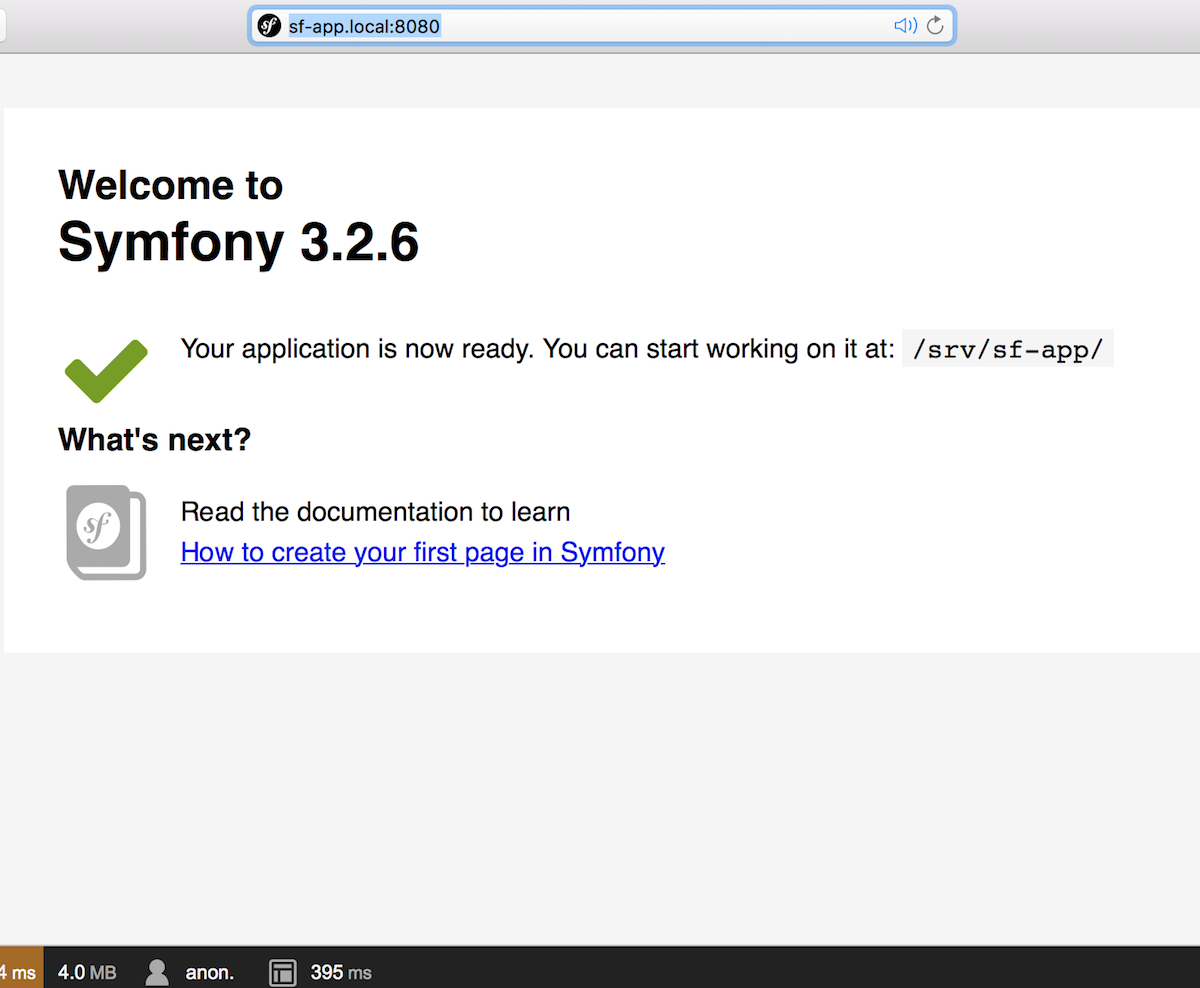Playing with docker-compose and Symfony
After playing with docker and jekyll, I had to look at docker-compose to implement a PHP project using the latest Symfony version.
I created the repository docker-compose and Symfony to play around and I like it a lot!
Here is the docker-composer.yml I came up with:
1
2
3
4
5
6
7
8
9
10
11
12
13
14
15
16
17
18
19
20
21
22
23
24
25
26
27
28
29
30
31
32
33
34
35
36
37
38
39
40
version: '3'
services:
redis:
image: redis:latest
container_name: redis
db:
image: mysql:5.7
container_name: db
ports:
- "3306:3306"
environment:
- MYSQL_ALLOW_EMPTY_PASSWORD=yes
- MYSQL_USER=flotz
- MYSQL_PASSWORD=password
- MYSQL_DATABASE=sf_app
php-fpm:
image: php:7-fpm
container_name: php
volumes:
- ./sf-app:/srv/sf-app
- ./php/sf-app.ini:/usr/local/etc/php/conf.d/sf-app.ini
composer:
image: composer/composer:alpine
container_name: composer
working_dir: /srv/sf-app
volumes:
- ./sf-app:/srv/sf-app
nginx:
image: nginx:latest
container_name: nginx
ports:
- "8080:80"
volumes:
- ./sf-app:/srv/sf-app
- ./nginx/vhost.conf:/etc/nginx/conf.d/sf-app.conf
As you can see, I am mainly using official images and I didn’t really want to create Dockerfile files.
Instead, I have a couple of configuration files (for nginx and php) so I can override default settings for my needs.
MySQL container
The container is pretty straightforward, the only sensible line is the environment (line 13 above) where you can specify the settings for accessing your database.
By default, the mysql image will create a root user. I use MYSQL_ALLOW_EMPTY_PASSWORD=yes to allow root user with an empty user - do NOT do that in production!!
MYSQL_USERto create a user.MYSQL_PASSWORDto give the above user a password.MYSQL_DATABASEto create a database. The above user WILL have access to that database.
I often ran into issues whilst playing around with the database container; mostly with the MYSQL_* flags and I found out I needed to stop the container, remove the volumes and restart it.
docker-compose rm -v does the trick.
Nginx container
This container is also pretty straightforward to setup, the only gotcha I ran into was actually in the vhost.conf.
Usually, the setting fastcgi points to the php sock file: fastcgi_pass unix:/var/run/php5-fpm.sock;.
when using 2 different containers (one for nginx and one for php-fpm) then you need to point to the php container: fastcgi_pass php:9000;.
The port 9000 needs to be exposed from the php-fpm image - which is by default. Pretty handy.
Interesting tip: you can get the logs from docker logs -f nginx if you change the values of:
access_log /dev/stdout;
error_log /dev/stdout debug;
Composer container
Once I had nginx and php-fpm setup, the next step was to throw in the standard Symfony framework. To do so, I used the composer container!
Make sure you use the right path in the working_dir setting (pointing to the Symfony root path) and then, simply run
docker-compose run composer install
Which will install the Symfony vendor, clear cache and install assets.
Job done, ready to code now!
